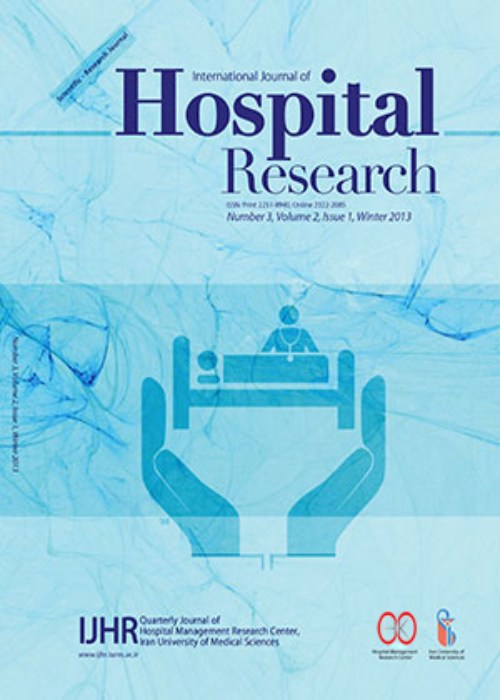Microeconomic Analysis of Healthcare Services in Bou Ali Sina University Hospital
Author(s):
Abstract:
Background And Objectives
Efficient hospital management requires appropriate cost and price strategies. Informed decision on costs and prices of healthcare services needs estimation of costs of unit services using microeconomic techniques. There is lack of knowledge and skills for such costing methods in the healthcare sector of developing countries such as Iran. This study aims at detail description of a relatively simple microcosting method by cost analysis of unit healthcare services in Bou Ali Sina University Hospital affiliated to Qazvin University of Medical Sciences, Iran.Methods
A cross-sectional descriptive study was conducted in Bou Ali Sina hospital over the period of October-December 2010. A volume-based top-down microcosting approach was adopted to calculate the average costs of unit services in the facility. Hospital departments were identified and clustered into three categories of general/overhead, intermediate, and final cost centers. The costs were classified into two direct and indirect groups. Data was collected using standard operational budgeting sheets. Costs were prorated using a step-down allocation method. Final units’ bed-day indices and the revenue generated from medication services were determined by reviewing hospitalized patient records. The net profit of each medication unit was calculated based on services cost data and occupied bed-day data. Hospital financial performance was analyzed using break-even analysis.Findings
Over half of the hospital costs were found to incur in intermediate departments (Nutrition, Laboratories, Pharmacy, and Diagnosis Testing departments), and the rest were equally related to general/overhead and final units. Over 75% of the hospital expenditures were direct costs, half of which being related to human resources expenses. An 80% bed-day occupancy rate was identified, with CCUs having the highest, and Ophthalmology Ward having the lowest rate. The hospital turned out to be in net loss with the majority of losses caused by ICU, CCU 2 and Internal Ward 1. The data suggests that the hospital can make significant revenue by activating unoccupied bed-day capacity of Ophthalmology and Heart wards.Conclusions
Microeconomic analysis of unit services is instrumental to identifying the areas requiring strengths and areas for improvement in hospital financial management. Such an analysis can also provide insight into practical strategies for improving hospital financial performance.Keywords:
Language:
English
Published:
International Journal of Hospital Research, Volume:1 Issue: 1, Autumn 2012
Page:
41
magiran.com/p1082338
دانلود و مطالعه متن این مقاله با یکی از روشهای زیر امکان پذیر است:
اشتراک شخصی
با عضویت و پرداخت آنلاین حق اشتراک یکساله به مبلغ 1,390,000ريال میتوانید 70 عنوان مطلب دانلود کنید!
اشتراک سازمانی
به کتابخانه دانشگاه یا محل کار خود پیشنهاد کنید تا اشتراک سازمانی این پایگاه را برای دسترسی نامحدود همه کاربران به متن مطالب تهیه نمایند!
توجه!
- حق عضویت دریافتی صرف حمایت از نشریات عضو و نگهداری، تکمیل و توسعه مگیران میشود.
- پرداخت حق اشتراک و دانلود مقالات اجازه بازنشر آن در سایر رسانههای چاپی و دیجیتال را به کاربر نمیدهد.
In order to view content subscription is required
Personal subscription
Subscribe magiran.com for 70 € euros via PayPal and download 70 articles during a year.
Organization subscription
Please contact us to subscribe your university or library for unlimited access!


